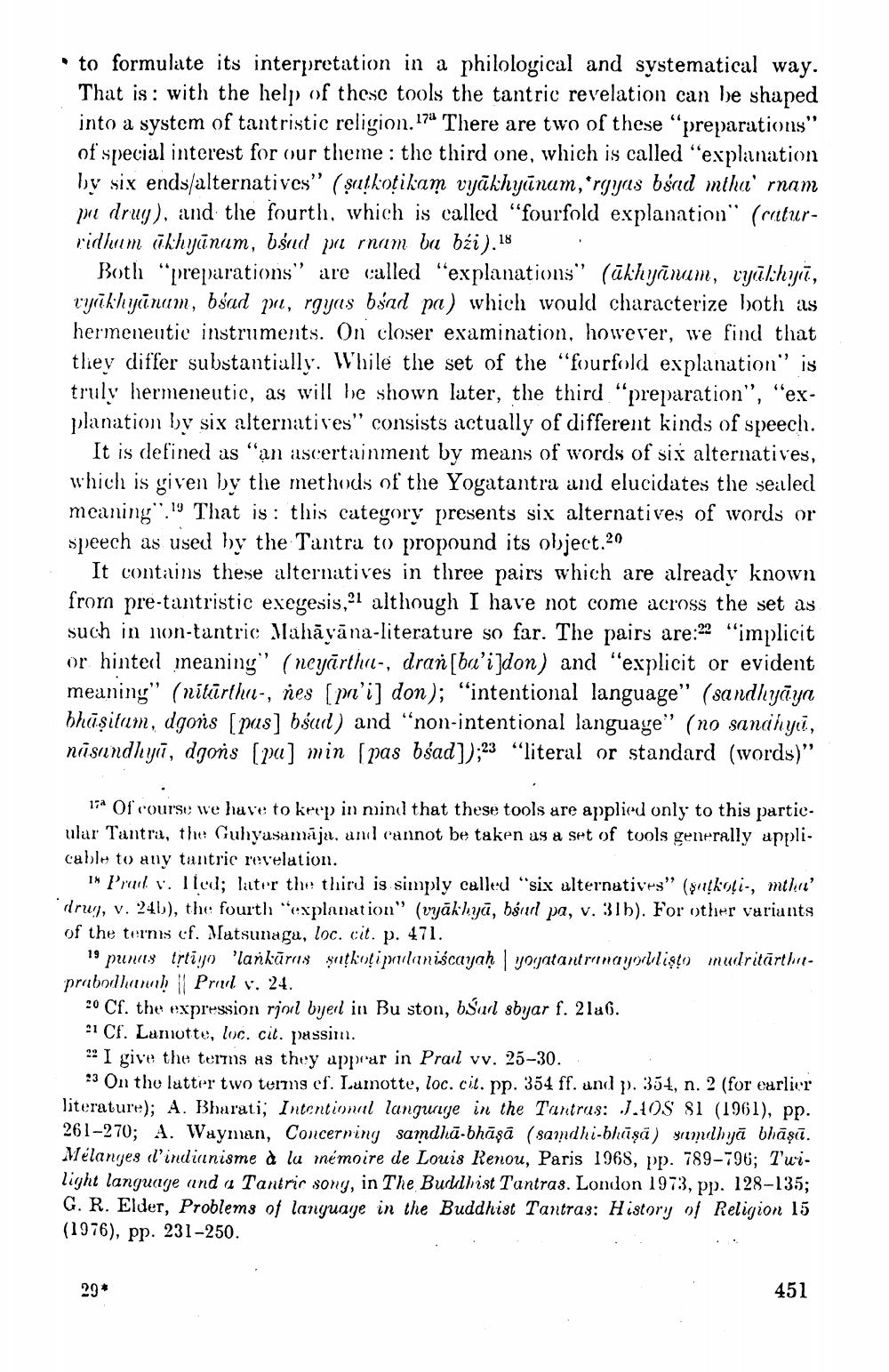Book Title: Remarks On Trantristic Hermeneutics Author(s): Ernst Steinkellner Publisher: Ernst Steinkellner View full book textPage 7
________________ to formulate its interpretation in a philological and systematical way. That is with the help of these tools the tantric revelation can be shaped into a system of tantristic religion. 17 There are two of these "preparations" of special interest for our theme: the third one, which is called "explanation by six ends/alternatives" (satkotikam vyākhyānam,*rgyas bsad mtha' rnam pa drug), and the fourth, which is called "fourfold explanation" (caturridhum akhyānam, bsad pa rnam ba bźi).18 Both "preparations" are called "explanations" (ākhyānam, vyākhyā, vyākhyānam, bsad pa, rgyas bsad pa) which would characterize both as hermeneutic instruments. On closer examination, however, we find that they differ substantially. While the set of the "fourfold explanation" is truly hermeneutic, as will be shown later, the third "preparation", "explanation by six alternatives" consists actually of different kinds of speech. It is defined as "an ascertainment by means of words of six alternatives, which is given by the methods of the Yogatantra and elucidates the sealed meaning. That is: this category presents six alternatives of words or speech as used by the Tantra to propound its object.20 It contains these alternatives in three pairs which are already known from pre-tantristic exegesis,21 although I have not come across the set as such in non-tantric Mahayana-literature so far. The pairs are:22 "implicit or hinted meaning" (neyartha-, dran [ba'i]don) and "explicit or evident meaning" (nitärtha-, nes [pa'i] don); "intentional language" (sandhyāya bhāṣitam, dgons [pas] bśad) and "non-intentional language" (no sandhyā, nasandhya, dgons [pa] min [pas bad]);23 "literal or standard (words)" 17 Of course we have to keep in mind that these tools are applied only to this particular Tantra, the Guhyasamaja, and cannot be taken as a set of tools generally applicable to any tantric revelation. 18 Prad v. 1ted; later the third is simply called "six alternatives" (satkoti-, mtha' drug, v. 24b), the fourth "explanation" (vyākhyā, bśud pa, v. 31b). For other variants of the terms cf. Matsunaga, loc. cit. p. 471. 19 punas tṛtiyo 'lankāras şaṭkoṭipadaniścayaḥ | yogatantranayoddiṣṭo mudritārthaprabodhanah | Prad v. 24. 20 Cf. the expression rjod byed in Bu ston, bu sbyar f. 21a6. 21 Cf. Lamotte, loc. cit. passim. 22 I give the terms as they appear in Prad vv. 25-30. 23 On the latter two terms ef. Lamotte, loc. cit. pp. 354 ff. and p. 354, n. 2 (for earlier literature); A. Bharati; Intentional language in the Tantras: JAOS 81 (1961), pp. 261-270; A. Wayman, Concerning samdha-bhāṣā (samdhi-bhāṣā) sandhya bhāṣā. Mélanges d'indianisme à la mémoire de Louis Renou, Paris 1968, pp. 789-796; Twilight language and a Tantric song, in The Buddhist Tantras. London 1973, pp. 128-135; G. R. Elder, Problems of language in the Buddhist Tantras: History of Religion 15 (1976), pp. 231-250. 29* 451Page Navigation
1 ... 5 6 7 8 9 10 11 12 13 14
